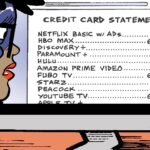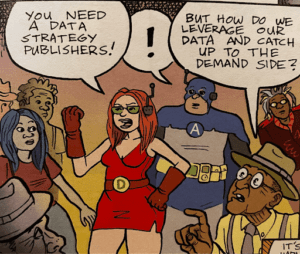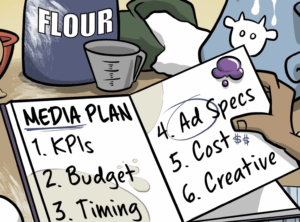 “Data-Driven Thinking” is written by members of the media community and contains fresh ideas on the digital revolution in media.
“Data-Driven Thinking” is written by members of the media community and contains fresh ideas on the digital revolution in media.
Today’s column is written by Michele Appello, director of business solutions at Improve Digital.
What makes an ad viewable? Your answer may differ based on whether you work on the buy side or the sell side of this industry, or even somewhere in the middle.
The official answer: the “industry viewability minimum standards,” published in 2014, which deem desktop display ads to be viewable if 50% of the ad is in view for one second. The standards received a heavy backlash after their release, with advertisers and agencies complaining they are too low and unacceptable.
Today, the industry definition of viewability is being misinterpreted as the focus shifts toward a discussion about brand impact. Let’s be clear: Viewability is not defined by whether or not the ad was seen long enough to have value. It’s whether an ad has the potential to be seen. It is the baseline needed in order to create a common audience measurement across all platforms, which is the driving point behind the viewability standard creation.
This does not mean that agencies and publishers cannot agree to stricter standards for specific campaigns. It just means the standard base definition of viewability should stand as is.
I believe the ongoing pressure to set stricter minimum standards is stunting potential growth and causing more disruption in the industry.
An Opportunity To Be Seen
In February 2011, the IAB, 4A’s and ANA formed a consortium to establish a much-needed cross-media metric. They recognized the first step was to move from a definition of impressions served towards impressions that were viewable. The Media Ratings Council (MRC) was given the role to set and implement the viewable measurement standards for the advertising industry.
In April 2014, MRC defined “viewable” as an ad that has the opportunity to be seen. Its minimum standards for viewability deemed ads that are less than 242,500 pixels to be viewable if 50% of the ad is in view for one consecutive second. For larger ads, the required pixel percentage drops to 30% for one consecutive second.
After running several studies, the MRC found that when 50% of the pixels of an ad was in view for one consecutive second, “in about 80% of the cases, it was 100% in view for that time,” MRC CEO George Ivie said at an IAB breakfast in March. Therefore 50% was the highest common denominator on having the greatest opportunity to be seen.
The IAB adopted the minimum display standards in the US and in parts of Europe.
GRPs And Television
In television, gross rating points (GRPs) are used to measure advertising performance. GRPs do not count the size of the audience reached. Instead, they calculate the “impressions as a percentage of the target population.”
So with television, there is no guarantee an ad will be effective before it’s shown, nor are make-goods given based on results of brand impact afterwards.
How many times have you gotten up and walked away from your television during a commercial? We’ve all turned our attention to our phones or tablets during a commercial break, essentially “tuning out” that spot, making it as effective as white noise. Media multitasking factors don’t seem to be brought up as arguments about GRP ratings and buying commercial spots around them.
Yet with digital, the conversation has shifted to paying for an ad only when it has been seen by a viewer long enough to have a brand impact. It just doesn’t add up.
What Can Be Done?
Publishers have some responsibility and need to clean up their websites, rethink the placement of their ad slots and move towards a quality-over-quantity model.
On the same note, agencies need to understand that with less ad positions for digital, prices will rise, not fall. They must be smarter about where they are buying their inventory and push towards running more on quality publishers.
Buyer arguments that prices should fall, due to the drop in the publisher’s cost of ad serving with fewer ad positions running online, can be countered by the publisher’s added cost of running an “always-on” viewability solution. Polling costs do not come cheap and could very well supersede any savings the publisher could have seen with a drop in ad-serving costs. Further, the value of these positions is higher, increasing the possibility of an ad being seen and decreasing advertising clutter.
Viewability was created to better our industry and set the baseline for an audience measurement standard across all mediums, including PC, TV and mobile.
But its definition is being transformed to suit the buyer’s gain at the seller’s expense. This only creates tension and distrust where there should be cooperation and partnerships. It’s time that the industry stops bickering and starts working together to make progress towards the end goal.
Fighting for short-term gains will only hurt us in the long run.
Follow Michele Appello (@mappello), Improve Digital (@ImproveDigital) and AdExchanger (@adexchanger) on Twitter.











